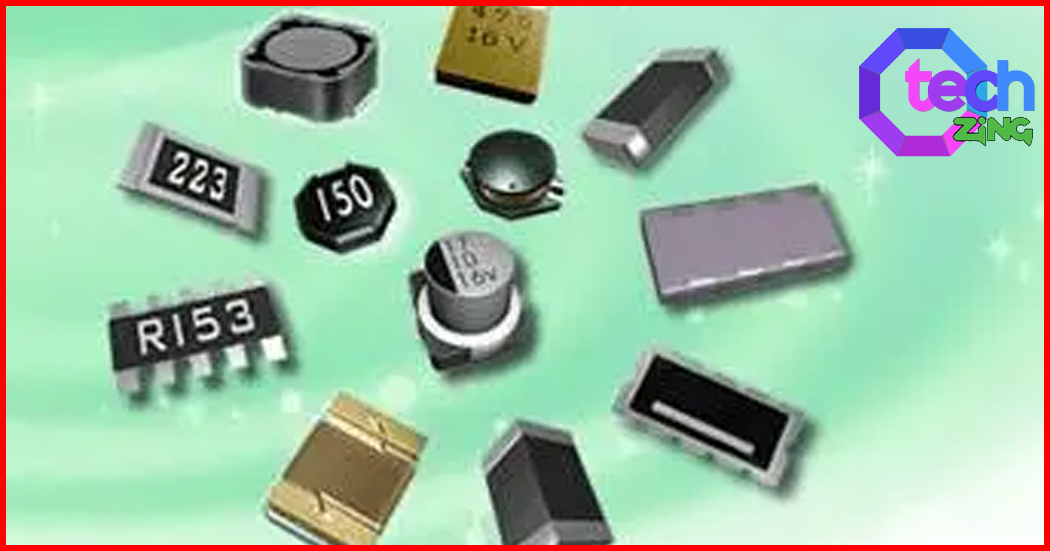Surface-Mount Technology (SMT) is a method of mounting electronic components directly onto the surface of a printed circuit board (PCB). This revolutionary technology has replaced traditional through-hole technology in many applications due to its numerous advantages. Let’s explore the inner workings of SMD technology and understand how it has transformed the electronics industry.

What is SMD Technology?
In SMT, surface-mount devices (SMDs) are used, which are electronic components designed specifically for this technology. These components have smaller sizes and smaller or no leads compared to their through-hole counterparts. Instead of passing through holes in the PCB, SMDs are attached directly to the surface using solder.
The Difference Between SMT and Through-Hole Technology
To better understand the differences between SMT and through-hole technology, let’s consider an analogy. Think of building a model car: with through-hole technology, you would insert the axles of the wheels into pre-drilled holes in the chassis. In contrast, with SMT, you would simply attach the wheels directly to the surface of the chassis.
The benefits of SMT become evident when considering miniaturization. With through-hole technology, larger components require more space on the PCB due to their leads passing through holes. In contrast, SMDs can be placed much closer together on the surface of the PCB, resulting in increased component density and smaller overall device size.
The Importance of Printed Circuit Boards in SMD Technology
Printed circuit boards play a crucial role in SMD technology. These boards provide a platform for mounting and interconnecting various electronic components. They consist of a non-conductive substrate with conductive pathways etched onto them.
The conductive pathways on PCBs allow electrical signals to flow between different components and ensure proper functioning of the electronic device. By designing PCBs specifically for SMT, manufacturers can optimize component placement and ensure efficient assembly processes.
SMD technology has revolutionized the electronics industry by enabling increased miniaturization, improved efficiency, and cost reduction.
How Does SMD Technology Work?
SMD technology involves a series of assembly processes that enable the precise placement of components on printed circuit boards (PCBs). These processes include solder paste printing, component placement using pick-and-place machines, and reflow soldering.
1. Solder Paste Printing
To start the assembly process, a stencil or inkjet printer is used to apply solder paste onto the PCB. The solder paste is a mixture of tiny solder particles and flux, which helps to create a strong bond between the components and the PCB. The stencil or printer ensures that the solder paste is applied only to specific areas where the components will be placed.
2. Component Placement
Once the solder paste is applied, pick-and-place machines come into play. These machines are equipped with robotic arms that precisely pick up individual components from reels or trays and place them onto the PCB. The components used in SMD technology are typically packaged in a way that allows for automated handling, such as tape and reel packaging.
3. Reflow Soldering
After the components are placed on the PCB, the next step is reflow soldering. This process involves heating the PCB to a specific temperature that melts the solder paste and creates a permanent bond between the components and the PCB. There are various methods used for reflow soldering, including infrared reflow, hot gas reflow, vapor phase reflow, or convection soldering.
- Infrared Reflow Soldering: In this method, infrared heat sources are used to melt the solder paste quickly and uniformly. It works well for small PCBs with densely packed components.
- Hot Gas Reflow Soldering: This method involves directing heated air or nitrogen gas onto the PCB to melt the solder paste. It offers better control over temperature profiles and reduces the risk of overheating sensitive components.
The combination of solder paste printing, component placement, and reflow soldering allows for the precise and automated assembly of components on PCBs. This streamlined process significantly reduces manufacturing time and ensures consistent quality in electronic devices.
SMD technology’s assembly process is crucial in achieving the miniaturization, increased component density, and improved performance that have revolutionized the electronics industry.
While SMD technology relies heavily on reflow soldering, it’s worth noting that there are alternative methods like wave soldering available as well. However, reflow soldering has become more popular due to its ability to handle smaller components and achieve higher levels of accuracy.
Advantages and Disadvantages of SMD Technology
Advantages of SMD Technology:
- Increased component density and miniaturization made possible by SMD technology have revolutionized the electronics industry. For instance, smartphones and smartwatches are prime examples of how SMD technology enables manufacturers to pack a multitude of functionalities into sleek, compact devices, enhancing portability and user experience.
- The ability to place components on both sides of the PCB further optimizes space utilization, leading to smaller and lighter end products.
Disadvantages of Automation in SMD Assembly Processes:
- While automation in SMD assembly processes offers numerous benefits such as improved accuracy, efficiency, and consistency, it also presents potential drawbacks. Over-reliance on automation may lead to reduced flexibility in adapting to customized or low-volume production requirements.
- Additionally, initial setup costs for automated assembly lines can be substantial, making them less feasible for small-scale manufacturing or prototype development.
Cost Reduction Benefits Associated with SMD Technology:
- SMD technology brings about significant cost reduction advantages throughout the manufacturing process. The elimination of drilling holes required for through-hole components reduces material and production costs.
- Moreover, automated assembly processes minimize labor expenses and enhance overall operational efficiency, contributing to lower production costs and increased competitiveness in the market.
The compact size, improved performance, and cost-effectiveness achieved through SMD technology continue to drive innovation across various electronic applications while addressing the demand for smaller, more powerful devices at a reduced cost.
Overcoming Challenges in SMD Technology
SMD technology presents unique challenges that need to be addressed for efficient assembly and repair processes. Some of the key challenges and solutions include:
1. Manual Assembly and Repair
The small sizes and lead spacings of SMDs can pose significant challenges during manual assembly and repair. This includes the difficulty in handling and placing tiny components, as well as the intricacies involved in soldering and desoldering them. However, innovative solutions such as specialized tools, magnification equipment, and precision soldering stations have made manual assembly and repair of SMDs more manageable.
2. Mechanical Stress and Thermal Cycling Damage
While SMD technology offers numerous advantages, it is essential to acknowledge its limitations, particularly in components subjected to frequent mechanical stress or thermal cycling. These conditions can lead to potential damage or failure of SMD components over time. To overcome this challenge, engineers often resort to design modifications, material selection, and robust testing procedures to ensure the reliability of SMD components in demanding environmental conditions.
Rework methods play a crucial role in correcting errors arising from the challenges mentioned above. These methods involve techniques for removing and replacing SMD components, such as hot air rework stations and specialized reflow equipment. Additionally, automated optical inspection systems are employed to detect and rectify defects during the assembly process, ensuring the quality and reliability of SMD technology despite the encountered challenges.
Exploring Diverse Applications of SMD Technology
SMD technology has become widely used in various industries, demonstrating its flexibility and importance in modern electronic manufacturing processes. Here are some of the many ways SMD technology is being applied:
1. Healthcare Industry
SMD technology plays a crucial role in the production of medical devices and equipment, enabling the creation of compact and efficient medical instruments such as monitoring devices, diagnostic equipment, and wearable health tech.
2. Automotive Sector
In the automotive industry, SMD technology is instrumental in the assembly of electronic control units (ECUs), sensors, and entertainment systems. The compact nature of SMD components allows for space-efficient designs within vehicles while ensuring high performance.
3. Consumer Electronics
From smartphones and laptops to smart home devices and entertainment systems, SMD technology is integral to the production of compact, lightweight, and sleek electronic gadgets that define the modern lifestyle.
The significance of SMD technology is especially evident in electronic circuit assembly and PCB manufacturing. Its ability to enable miniaturization and increase component density makes it essential for creating complex circuitry and densely populated PCBs in a wide range of electronic devices.
Future Trends Shaping the SMD Landscape
As technology continues to advance at a rapid pace, the landscape of SMD technology is constantly evolving. Here are some future trends that are shaping the world of SMD:
1. Reflow ovens and precise soldering
One of the emerging advancements in SMD assembly processes is the use of reflow ovens for more precise soldering. Reflow ovens provide a control environment for heating and cooling the PCBs, ensuring that solder joints are formed accurately and reliably. With the ability to control temperature profiles, reflow ovens enable manufacturers to achieve consistent soldering results, even with complex PCB designs.
2. Flux residues and efficient formulations
Flux residues can sometimes be an issue in the SMD assembly process. However, future trends are focusing on developing more efficient flux formulations that minimize residue build-up. This helps improve the reliability and longevity of electronic devices.
3. Automated optical inspection (AOI) systems for quality control
Quality control is essential in SMD assembly, and automated optical inspection (AOI) systems are playing a crucial role in this area. These systems use advanced imaging technology to inspect PCBs for defects such as missing components, misalignment, or soldering issues. AOI systems not only enhance the accuracy and speed of inspections but also reduce human error. As technology advances, AOI systems will become even more sophisticated, enabling manufacturers to achieve higher levels of quality assurance.
With ongoing advancements in reflow ovens, flux formulations as discussed in this definitive guide to solder paste, and AOI systems, we can expect even greater precision, quality control, and efficiency in SMD technology in the years to come.
Conclusion
The evolution of SMD technology has undeniably transformed the landscape of electronics manufacturing. Reshaping the way electronic devices are design, assembled, and utilized. Embracing this future of electronics manufacturing with SMD technology opens up a world of possibilities. Also benefits for both manufacturers and end-users.
SMD technology has revolutionized electronics manufacturing by enabling:
- Increased automation: Streamlining assembly processes and enhancing precision
- Cost reduction: Optimizing production efficiency and reducing material waste
- Miniaturization: Allowing for smaller, sleeker device designs without compromising functionality
- Enhanced performance: Improving mechanical and electrical characteristics of electronic components
- Diverse applications: Catering to a wide range of industries with its versatility
By harnessing the power of SMD technology, manufacturers can innovate more rapidly and bring cutting-edge electronic products to market. End-users, in turn, experience the benefits of compact, efficient, and high-performance electronic devices. That have become integral parts of modern life.
Embracing the future of electronics manufacturing with SMD technology signifies a commitment to progress, efficiency, and reliability in an ever-evolving industry. As SMD technology continues to advance. It will undoubtedly shape the future of electronics manufacturing even further, presenting new opportunities and pushing the boundaries of what is possible in the realm of electronic innovation.
In conclusion, SMD technology stands as a testament to the remarkable evolution. That has taken place in electronics manufacturing, revolutionizing the industry. It laying the groundwork for a future filled with endless potential.






















+ There are no comments
Add yours